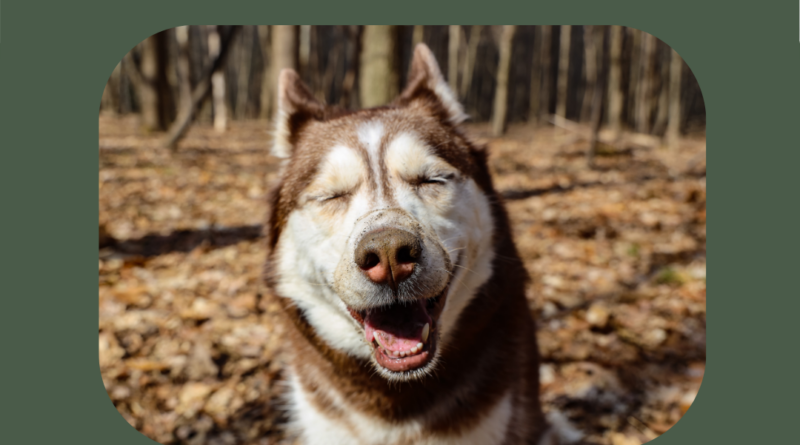Siberian Husky Secrets: A Complete Guide to the Dog of Your Dreams
This detailed guide, divided into essential steps, will accompany you at every step of the adoption journey, from research and preparation to the first days at home with your new companion:

Step 1: Research and Preparation
1.1. Dive into the History and Characteristics of the Breed:
Explore the Siberian Husky’s fascinating history, its ancient origins, and its journey to today’s popularity.
Discover the breed’s striking physical characteristics, such as its double coat, vibrant colors and piercing eyes.
Understand the Siberian Husky’s unique temperament, intelligence, vibrant energy, and need for socialization.
1.2. Evaluate your Lifestyle and Routine:
Analyze whether your lifestyle and routine are compatible with the Siberian Husky’s needs, which require time, attention and regular physical exercise.
Consider the space available in your home and the possibility of offering your dog a suitable environment to move around and expend energy.
Assess whether you are willing to invest time and resources into breed-specific training, socialization, and care.
1.3. Research Responsible Adoption Options:
Look for reliable shelters and NGOs specializing in the Siberian Husky breed in your region.
Contact ethical and responsible breeders who follow best husbandry and animal welfare practices.
Carry out interviews and visits to get to know the animals available for adoption, evaluating their personality and compatibility with your lifestyle.
1.4. Prepare your Home for the New Family Member:
Adapt the home environment to ensure the safety of your Siberian Husky, protecting fragile objects, electrical wires and other items that could pose a danger.
Provide a comfortable place for your dog to sleep and rest, such as a soft bed or mat in a quiet area of the house.
Purchase the essential items for caring for your Siberian Husky, such as food bowls, water fountains, collars, leashes, toys and hygiene products.
Step 2: Bringing the Siberian Husky Home
2.1. Safe and Comfortable Transportation:
Use suitable transport, such as a car with a secure transport box or a specialized animal transport service.
Make sure your Siberian Husky has fresh water available during the trip and makes stops for rest and physiological needs.
Keep the dog calm and calm during the journey, talking to him in a soft tone and avoiding sudden movements.
2.2. First Days of Adaptation:
Provide your Siberian Husky with a quiet, safe space to familiarize himself with his new surroundings.
Let the dog explore the house little by little, without pressuring him or forcing him to do anything.
Establish a routine of feeding, exercise and physiological needs to ensure the animal’s well-being.
Start the gradual socialization process by introducing the Siberian Husky to other animals and people in a controlled and positive way.
2.3. Veterinary Consultation and Basic Care:
Schedule an appointment with a veterinarian specializing in exotic animals to perform a complete check-up and check the health status of your Siberian Husky.
Follow veterinary guidelines on vaccinations, deworming and coat care, hygiene and oral health.
Implement a quality diet, rich in proteins and nutrients suited to the needs of the animal’s breed and age.
Step 3: Training and Socialization
3.1. Building a Trusting Relationship:
Use positive reinforcement techniques, such as food rewards, praise and petting, to train your Siberian Husky effectively and enjoyably.
Be patient and understanding with the learning process, as the Siberian Husky is an intelligent dog, but also independent and stubborn.
Create a bond of trust and friendship with your Siberian Husky by showing consistent affection, respect and attention.
3.1. Building a Trusting Relationship:
Use positive reinforcement techniques, such as food rewards, praise and petting, to train your Siberian Husky effectively and enjoyably.
Be patient and understanding with the learning process, as the Siberian Husky is an intelligent dog, but also independent and stubborn.
Create a bond of trust and friendship with your Siberian Husky by showing consistent affection, respect and attention.
3.2. Basic Training for a Life in Harmony:
Teach basic obedience commands, such as “sit”, “down”, “stay” and “come”, using positive reinforcement techniques and avoiding punishment.
Train the Siberian Husky to walk on a leash calmly and safely, using appropriate leashes and reinforcing good behavior.
Teach the dog to eliminate in the correct place, using positive reinforcement techniques and establishing a regular routine.
3.3. Essential Socialization for a Socialized Life:
Introduce the Siberian Husky to other dogs, people and animals in a gradual and controlled manner, in safe and supervised environments.
Encourage positive interactions between your Siberian Husky and other animals by using positive reinforcement techniques and rewarding friendly behavior.
Teach your dog to deal with different situations and environments, exposing him to different stimuli in a controlled and positive way.
Step 4: Care and Health
4.1. Nutritious and Balanced Diet:
Offer your Siberian Husky a high-quality diet, rich in proteins and nutrients suited to its energy needs and age.
Consult a veterinarian specializing in exotic animals to determine the ideal amount of food and meal frequency.
Avoid processed foods, sweets and other items that could be harmful to your dog’s health.
Keep fresh, clean water available for your Siberian Husky at all times.
4.2. Regular Physical Exercise and Mental Stimulation:
Provide your Siberian Husky with regular physical exercise, such as long walks, runs, outdoor play or activities in open areas.
Stimulate your Siberian Husky mentally with interactive toys, intelligence games and activities that challenge his mind.
Adapt the level of exercise and activity to your Siberian Husky’s age, health, and energy level.
4.3. Coat Care and Hygiene:
Brush your Siberian Husky’s coat regularly, at least twice a week, to remove loose hair, prevent mats from forming, and maintain healthy skin.
Bathe your Siberian Husky only when necessary, using breed-specific shampoos and following veterinary guidelines.
Keep your Siberian Husky’s ears clean and dry by checking them regularly and removing excess wax.
Take care of your Siberian Husky’s nails by trimming them regularly to prevent them from getting long and causing discomfort.
4.4. Veterinary Visits and Preventive Care:
Take your Siberian Husky to the veterinarian regularly for full check-ups, vaccinations, deworming and preventive care.
Follow veterinary guidance on the frequency of breed-specific appointments, exams and health procedures.
Be alert for signs of illness or changes in behavior in your Siberian Husky and seek immediate veterinary care if necessary.
4.5. Oral Health and Teeth Care:
Brush your Siberian Husky’s teeth regularly, at least twice a week, using a canine toothbrush and animal-specific toothpaste.
Offer your Siberian Husky chew toys that promote oral hygiene and help prevent tartar and plaque.
Take your Siberian Husky to the veterinarian for professional teeth cleaning and oral health checks regularly.
4.6. Sterilization or Castration:
Consider spaying or neutering your Siberian Husky after consulting a veterinarian, as this can have several benefits for the dog’s health and behavior.
Reduced risk of diseases such as breast and prostate cancer in females and males, respectively.
Decrease in territorial and aggressive behavior, especially in males.
Control of the dog population and prevention of unwanted breeding.
Step 5: Love, Companionship and Lasting Happiness
5.1. A Loyal and Caring Companion:
The Siberian Husky is a loyal, affectionate dog that is deeply attached to its family.
Dedicate quality time to your Siberian Husky, playing with him, going for walks and providing activities that keep him entertained and happy.
Provide your Siberian Husky with a warm, loving home environment where he feels safe and loved.
5.2. Shared Adventures and Activities:
The Siberian Husky is an energetic dog and loves to venture outdoors.
Plan fun and enriching activities for your Siberian Husky, such as trail walking, running, swimming or biking.
Encourage your Siberian Husky to practice dog sports, such as canicross, bikejoring or skijoring, which stimulate him physically and mentally.
5.3. A Member of the Peerless Family:
With proper love, attention and care, the Siberian Husky will become an unparalleled member of the family, providing moments of joy, companionship and unconditional love.
This complete guide takes you step by step through the adoption journey, from research and preparation to the first days at home with your new companion.
Remember that the Siberian Husky is a unique and special dog that requires specific care and dedicated attention.
Follow the tips and guidance in this guide to provide your Siberian Husky with a full, happy and healthy life by your side.
Remember if:
Adopting a Siberian Husky is a long-term commitment. Before you bring one of these dogs home, make sure you are prepared to provide the care and attention he needs to live a happy, healthy life.
Frequently Asked Questions
1. Are Siberian Huskies good for first-time dog owners?
Siberian Huskies are intelligent and loyal dogs, but they can be challenging for first-time dog owners. They require a lot of exercise, training, and socialization, and they can be stubborn and independent. If you are a first-time dog owner, it is important to do your research and be prepared to make a significant commitment to your dog.
2. How much exercise do Siberian Huskies need?
Siberian Huskies are high-energy dogs that need at least two hours of exercise per day. This can include walks, runs, hikes, or playtime in the yard. They also need mental stimulation, such as training, puzzle toys, and playtime.
3. Do Siberian Huskies need to be trained?
Yes, Siberian Huskies need to be trained. They are intelligent dogs, but they can also be stubborn and independent. Training can help them learn basic commands, good manners, and how to live safely in a home.
4. Are Siberian Huskies good with kids?
Siberian Huskies can be good with kids, but it is important to supervise them closely when they are together. They are large, powerful dogs that can accidentally knock over small children. They can also be possessive of their food and toys, so it is important to teach them to share.
5. Are Siberian Huskies good with other pets?
Siberian Huskies can be good with other pets, but it is important to introduce them slowly and carefully. They have a strong prey drive, so they may chase or try to herd smaller animals. They may also be territorial with other dogs, so it is important to supervise them closely when they are around other dogs.
6. How long do Siberian Huskies live?
Siberian Huskies typically live 12-14 years.
7. What is the best climate for Siberian Huskies?
Siberian Huskies are bred for cold weather, so they do best in climates with cool temperatures. They can overheat in hot weather, so it is important to keep them cool in the summer.
8. How much do Siberian Huskies cost?
The cost of a Siberian Husky can vary depending on where you get it from. From a breeder, you can expect to pay anywhere from $500 to $3,000. You may also be able to find Siberian Huskies for adoption from shelters or rescue organizations.
9. What should I feed my Siberian Husky?
Siberian Huskies need a high-quality diet that is high in protein and low in carbohydrates. They should also have access to fresh water at all times.
10. How do I groom my Siberian Husky?
Siberian Huskies have a thick double coat that needs to be brushed regularly to prevent mats and tangles. They also need to be bathed occasionally, but not too often, as this can dry out their skin.
11. How do I train my Siberian Husky?
Siberian Huskies are intelligent dogs that can be trained using positive reinforcement methods. This means rewarding them for good behavior with treats, praise, or playtime. It is important to be patient and consistent with training, as it may take some time for your dog to learn new commands.
12. How do I socialize my Siberian Husky?
Siberian Huskies need to be socialized from an early age to learn how to interact with other dogs and people safely. This can be done by taking them to puppy classes, dog parks, and other places where they can meet new people and animals.
13. What are some common health problems of Siberian Huskies?
Some common health problems of Siberian Huskies include hip dysplasia, elbow dysplasia, and eye problems. It is important to have your dog checked by a veterinarian regularly to screen for these and other health problems.
14. What are some signs that my Siberian Husky is sick?
Some common signs that your Siberian Husky is sick include lethargy, loss of appetite, vomiting, diarrhea, and excessive panting. If you notice any of these signs, it is important to take your dog to the veterinarian immediately.
15. How can I prevent my Siberian Husky from getting sick?
You can help prevent your Siberian Husky from getting sick by feeding them a healthy diet, keeping them up-to-date on their vaccinations, and taking them to the veterinarian for regular checkups.
16. What should I do if my Siberian Husky bites someone?
If your Siberian Husky bites someone, it is important to take the following steps:
- Immediately remove your dog from the situation.
- Check the person for injuries and call 911 if necessary.
- Report the bite to your local animal control agency.
- Have your dog examined by a veterinarian to rule out any medical causes for the bite.
17. What can I do if my Siberian Husky is chewing on things?
Siberian Huskies are natural chewers, so it is important to provide them with plenty of chew toys to prevent them from chewing on destructive items. You can also try freezing their toys to make them more appealing.
18. How can I stop my Siberian Husky from howling?
Siberian Huskies are known for their howling, which is a way of communicating with other dogs. There are a few things you can do to try to stop your dog from howling, such as providing them with plenty of exercise and mental stimulation, making sure they have a comfortable place to sleep, and ignoring them when they howl.
19. How can I keep my Siberian Husky from digging?
Siberian Huskies are natural diggers, so it is important to provide them with a designated digging area. You can also try burying their favorite toys in the yard to give them something to dig for.
20. What is the best way to transport a Siberian Husky?
The best way to transport a Siberian Husky is in a crate or kennel that is large enough for them to stand up, turn around, and lie down comfortably. You should also secure the crate in your car to prevent it from moving around. If you are flying with your dog, you will need to make sure that they are properly kenneled and that the airline allows them to fly in the cargo hold.



